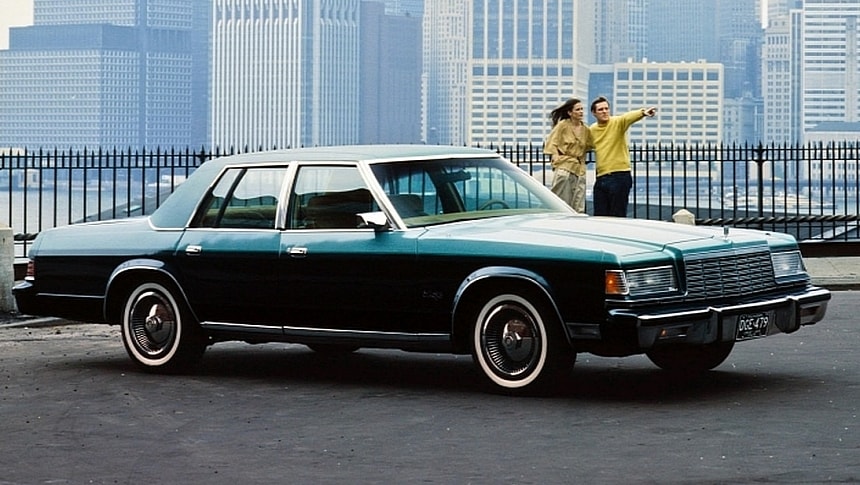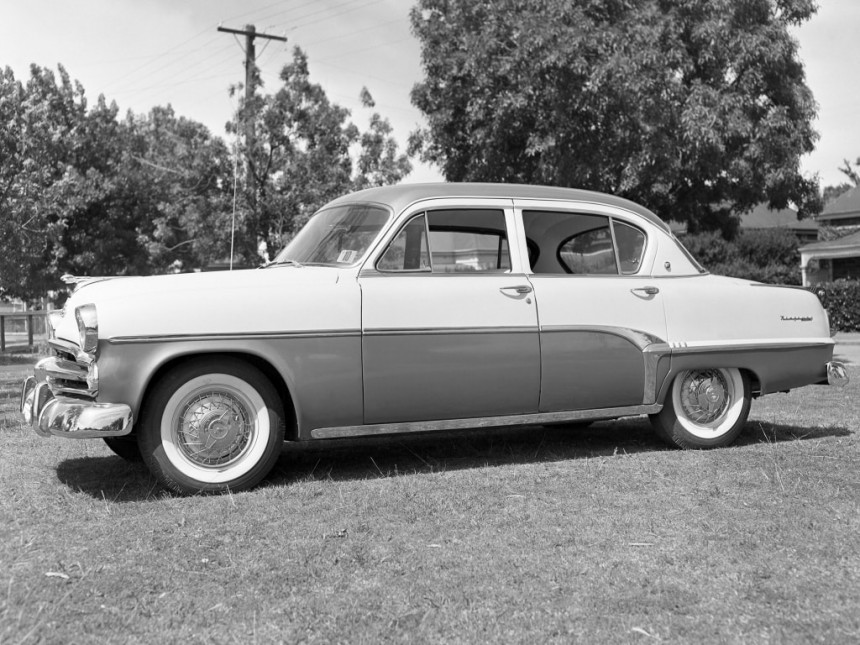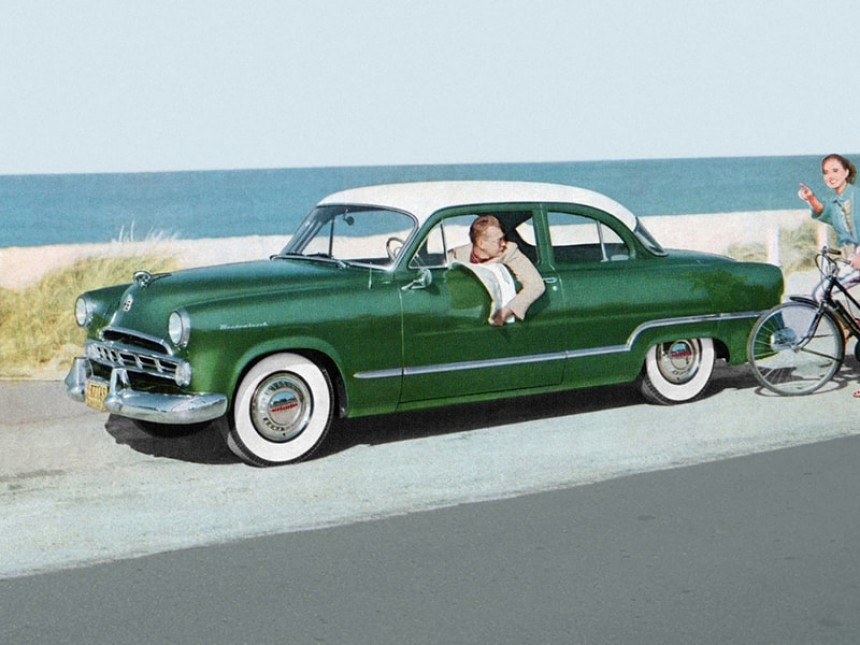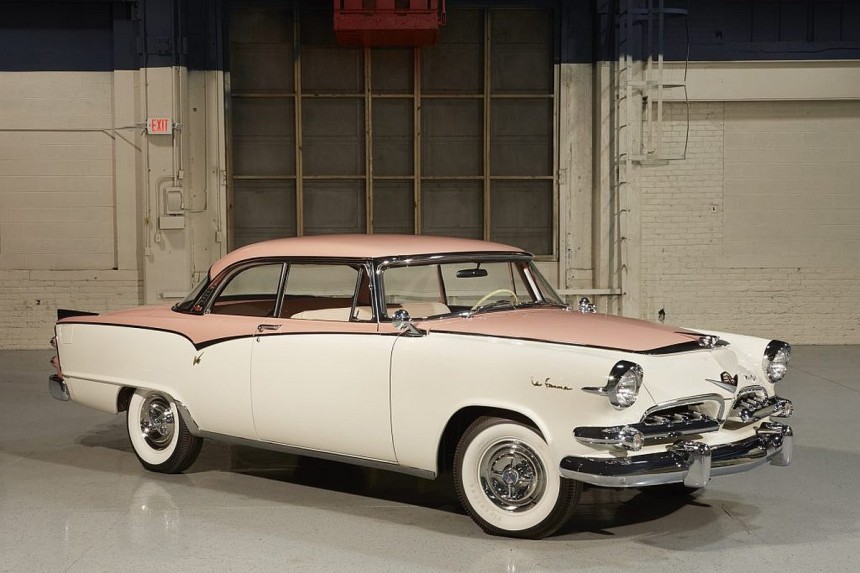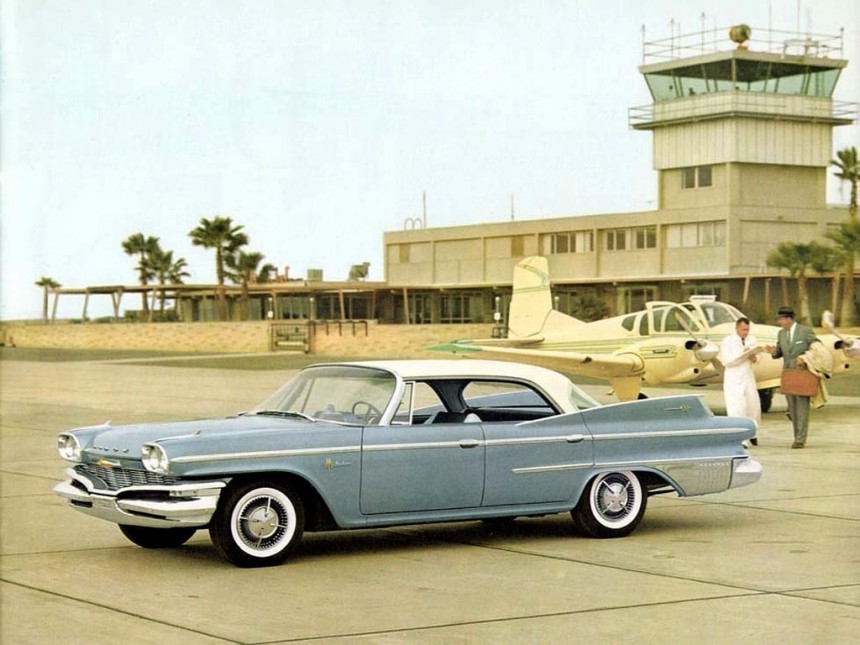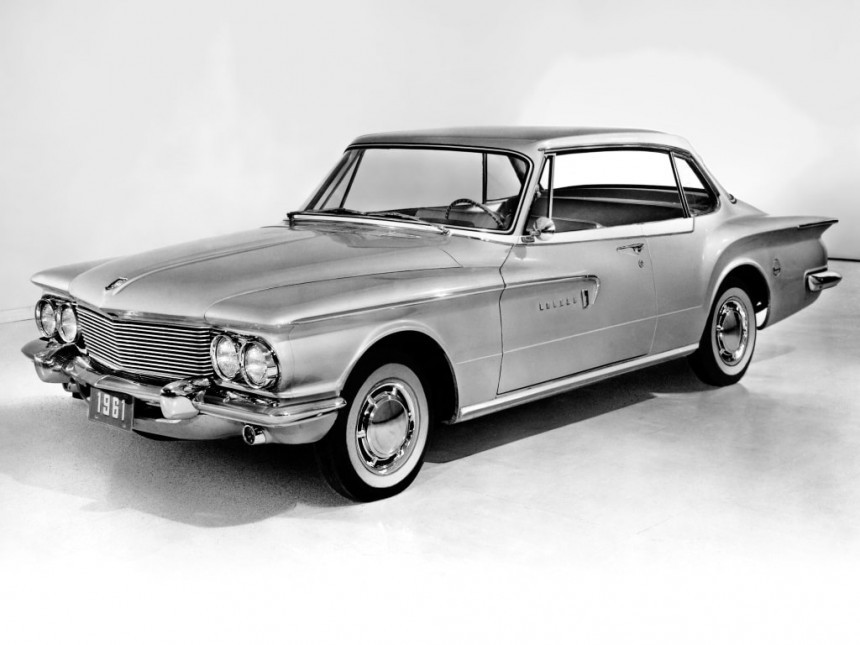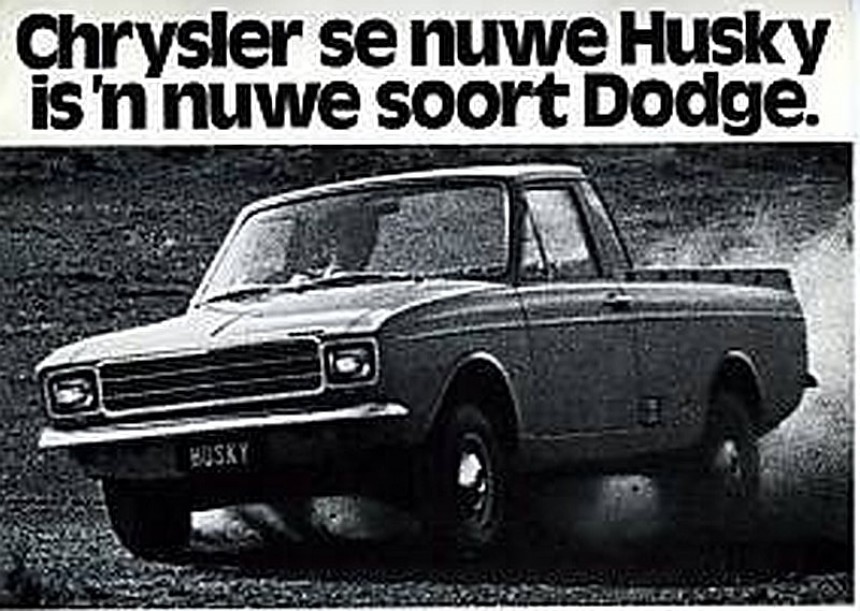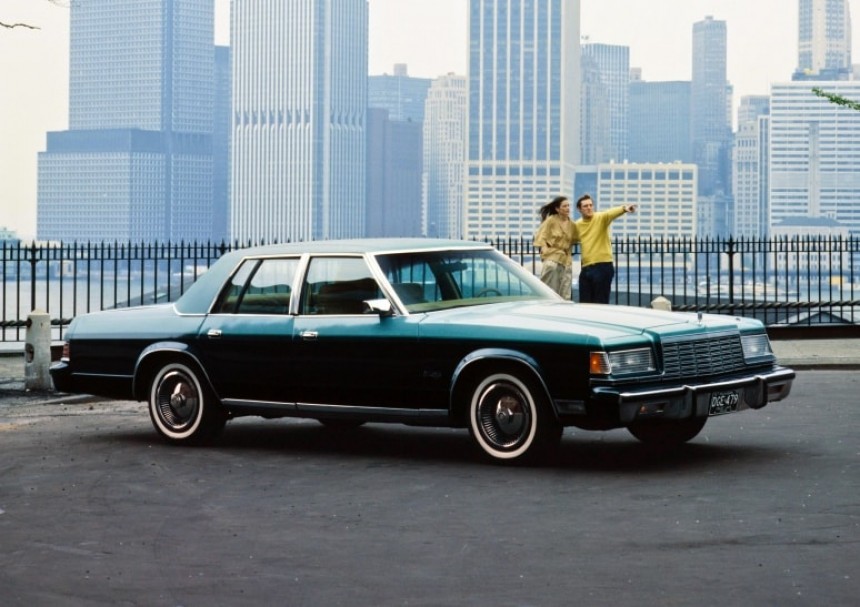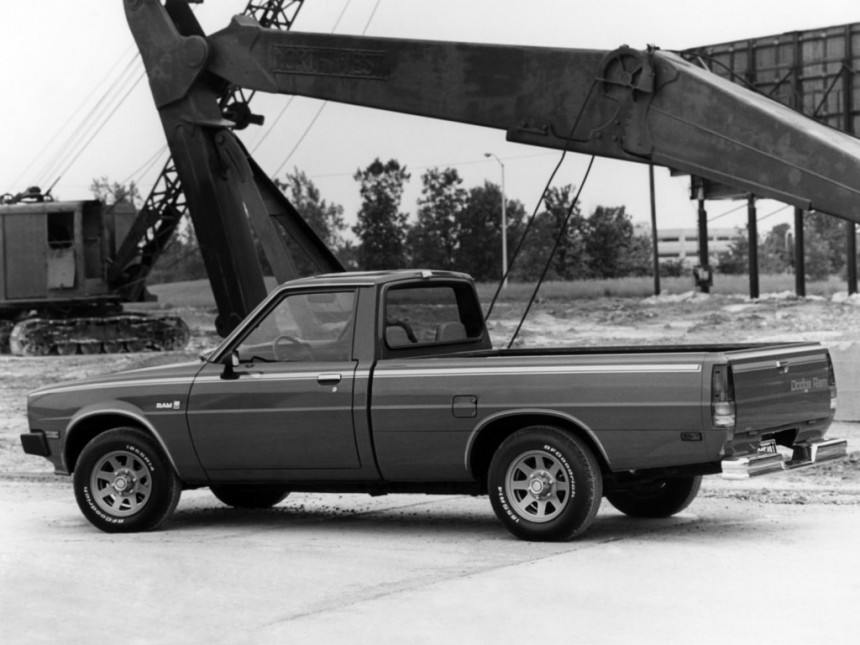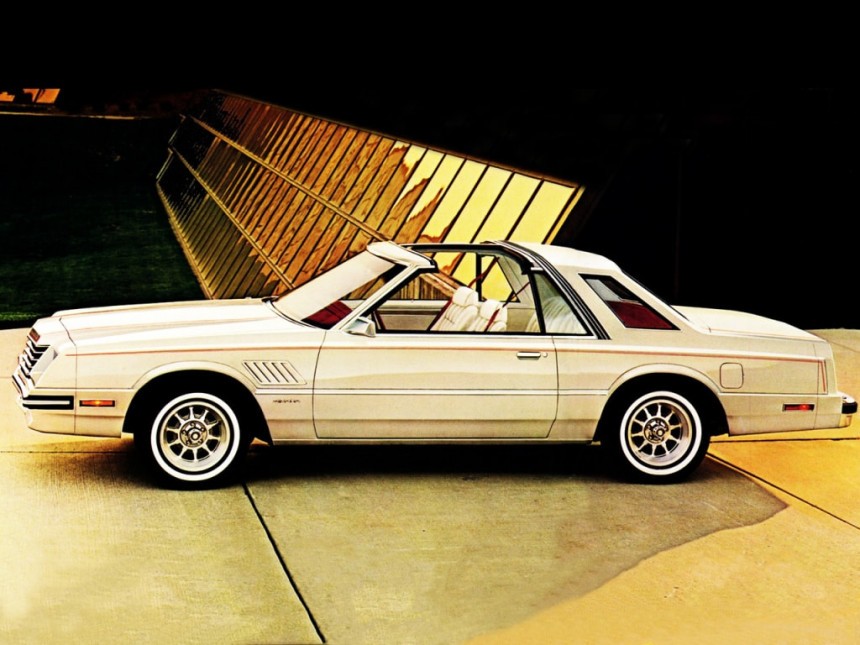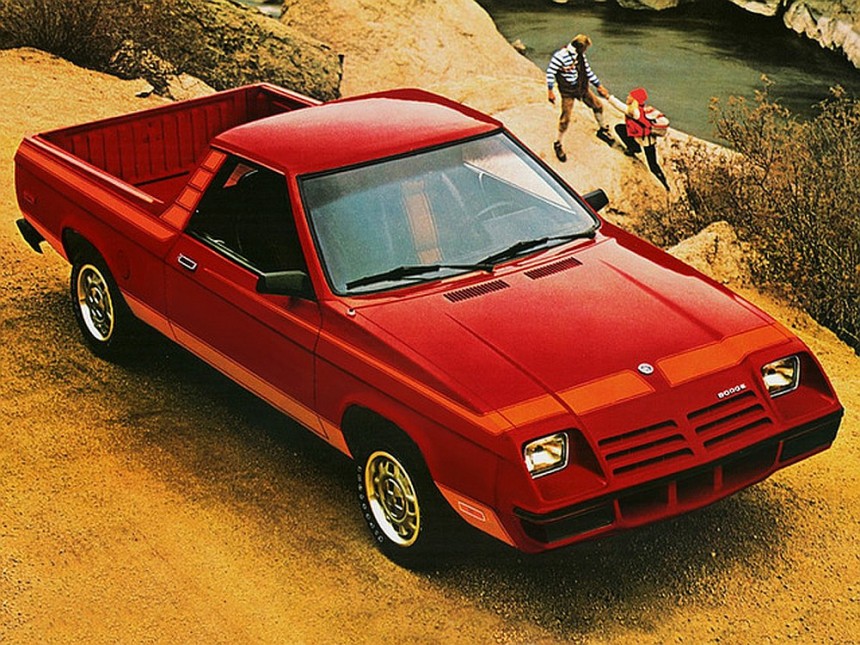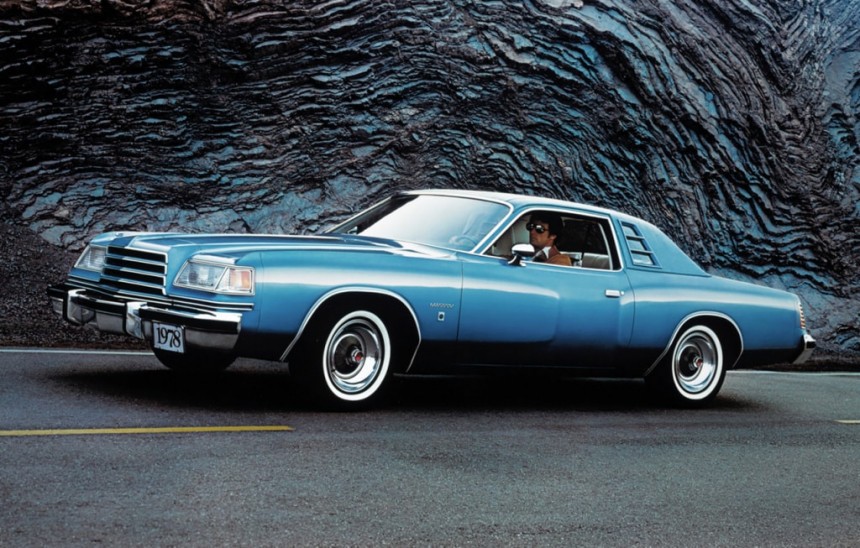Established as the Dodge Brothers Company in 1900, Dodge was originally a supplier of parts and assemblies to Detroit-based automakers. The firm began making automobiles in 1914 and became part of the Chrysler Corporation in 1928. It has since become one of America's most legendary vehicle manufacturers.
The company's heritage includes a long list of iconic nameplates. Dodge built muscle cars like the Challenger, Charger, and Super Bee and full-size rigs like the Monaco and Polara. The compact Dart is pretty famous, too.
But, of course, the list wouldn't be complete without vans and pickup trucks. The Ram division was once part of the Dodge company. We obviously can't forget the Caravan, which kickstarted the minivan craze, and the V10-powered Viper.
But not all Dodge nameplates became famous. Some went into the history books after only a few years in showrooms and are pretty much forgotten outside the Dodge fan club. Here's a list of ten nameplates you probably never knew existed.
One reason you may not have heard about the Kingsway is because it was created for the export market. Moreover, the Kingsway wasn't a fully-fledged Dodge. These cars were, in fact, rebadged Plymouths with Dodge bumpers and trim.
The nameplate debuted in 1940 as a more affordable version of the D14 Custom. It was sold in Canada as a rebadged version of Plymouth's contemporary full-size car. Dodge retired the name from the Canadian market after the 1941 model year.
The company continued using it in other markets, but the Kingsway was revived north of the border in 1951. At the time, it was based on the Plymouth Deluxe. The badge was also used on versions of the Plaza, Savoy, Cranbrook, Belvedere, and Fury through 1959.
Dodge also sold the Kingsway in Australia, where it was based on the Plymouth P25 and the DeSoto SP25 Diplomat. Chrysler Australia also developed a coupe utility version. The Kingsway was also assembled in Sweden from 1955 to 1957. The nameplate was dropped in 1960 with the arrival of the Dodge Dart.
Produced from 1949 to 1954, the Meadowbrook is now largely forgotten. And that's mainly because it was overshadowed by the Coronet. Upon arrival, the Meadowbrook slotted above the Wayfarer and beneath the range-topping Coronet. It was largely identical to the latter but came with fewer convenience features.
The Meadowbrook was a sales hit in its first year on the market. Although it was only available as a four-door sedan, it made up 30% of the company's sales. Starting in 1952, when the Wayfarer was discontinued, the Meadowbrook became Dodge's entry-level offering in the United States.
The 230-cubic-inch (3.8-liter) L-head inline-six was the only engine option for the Meadowbrook until 1954 when the 241-cubic-inch (4.0-liter) Red Ram V8 became available. The latter generated 140 horsepower. The nameplate was discontinued without a successor due to slow sales.
Although a stand-alone model by badge, the La Femme was, in fact, a Royal Lancer with a few extras. Designed during the post-WWII economic boom, the La Femme was the first American car designed specifically for women. Previewed by the Chrysler La Comtesse concept, the Dodge La Femme debuted in 1955 with a pink/white two-tone finish.
But it was more than a Royal Lancer finished in a supposedly feminine color. The interior was also draped in pale pink vinyl, complemented by Gold Cordagrain trim and Orchid Jacquard fabric. It also came with accessories like a lipstick case, a purse, and a cigarette lighter. The package was rounded off by a rain set consisting of a cape, hat, and umbrella, all fitted in the custom storage compartment.
With fewer than 1,500 units sold in 1955, Dodge dropped the beauty accessories and replaced the pink/white exterior with a Misty Orchid/Regal Orchid combo for 1956. The company also went with a new vinyl pattern inside the cabin. Sales dropped below the 1,000-unit mark.
With fewer than 2,500 units sold over two model years, Dodge discontinued the La Femme. But even though it was a marketing flop, the La Femme was a sign that car companies were finally seeing women beyond the "housewife" status quo.
The Matador arrived for the 1960 model year when Dodge reshuffled its entire full-size lineup. With both the Coronet and the Royal discontinued, the company introduced three new models to fill the gap. The Polara was assigned top-trim duty, while the Dart took over as the entry-level model. The Matador slotted between them.
Essentially a replacement for the long-running Coronet, the Matador used the 122-inch wheelbase platform of the Chrysler Windsor and Newport. Much like its predecessor, the Matador was offered in a variety of body styles, including a two-door hardtop, a four-door sedan, and a station wagon.
The Matador came standard with a 361-cubic-inch (5.9-liter) V8 engine rated 295 horsepower, but Dodge also offered a 383-cubic-inch (6.3-liter) mill good for 325 horses.
Introduced at a time when US full-size car sales were at their lowest level since the end of WWII, the Matador moved only 27,907 units. By contrast, the slightly smaller Dart sold more than 300,000 examples. As a result, Dodge dropped the Matador for the 1961 model year.
Dodge did not revive the nameplate, but American Motors Corporation offered midsize and full-size vehicles under the same moniker from 1971 to 1978.
Dodge began using the Lancer name to designate hardtop versions of the Coronet, Royal, and Custom Royal in 1955. However, the Lancer didn't become a stand-alone nameplate until 1961. It was born when Chrysler assigned the Valiant to the Plymouth division, leaving Dodge dealers without a compact car.
Essentially a badged-engineered, slightly more upmarket version of the Valiant, the Lancer was Dodge's very first compact automobile. Much like the Matador, the Lancer did not meet expectations and was short-lived. Outsold by the Plymouth Valiant by a ratio of two to one, the Lancer went into the history books in 1962. It was replaced by the Dart, which had been downsized after two years on the full-size market.
The Lancer did not disappear for good, though. In 1985, Dodge revived the name for a midsize five-door hatchback built on the Chrysler H platform. A more affordable take on the LeBaron GTS, the Lancer slotted between the Aries and the 600.
This version of the Lancer survived for five model years, selling 136,455 units through 1989. A limited-edition Shelby version was produced in 1988 and 1989. The Lancer was replaced by the Dodge Spirit.
Arguably the most unknown vehicle on this list, the Husky wasn't built or sold in the United States. It wasn't a real Dodge, either. Introduced in 1975, it was a pickup version of the Rootes Arrow. More commonly known as the Hillman Hunter in the United Kingdom, the Arrow was a small family car developed by the Rootes Group.
What does this company have to do with Chrysler? Well, it was one of the three entities that merged to form Chrysler Europe in 1967. The other two were French carmaker Simca and Spanish manufacturer Barreiros.
Offred in coupe, sedan, and station wagon body styles, the Arrow was produced in several factories outside the UK, including in Malta, Iran, Australia, and New Zealand. The Arrow also spawned two pickup models. One was sold as the Paykan in Iran, while the other was released in South Africa as the Dodge Husky.
Powered by a 1.7-liter inline-four, the Husky was short-lived. There's no info on how many were built, but the small pickup is an extremely rare sight nowadays.
If you're familiar with the Chrysler New Yorker, you probably already know about the St. Regis. The nameplate was introduced in 1955 for hardtops with exclusive two-tone paint. The model was retired in 1956 but returned in the 1974-1978 and 1979-1981 generations of the New Yorker. But I bet you didn't know Dodge also made a St. Regis.
It was launched alongside the final iteration of the New Yorker St. Regis for the 1979 model year. It replaced the Monaco as the company's largest automobile, slotting above the Diplomat and Aspen. It was built on the R-body platform, shared with the Chrysler Newport, Chrysler New Yorker, and the Plymouth Gran Fury.
Available only as a four-door notchback sedan, the St. Regis featured frameless door glass and transparent retractable headlamp covers. The St. Regis was discontinued when Chrysler retired the R platform during the 1981 model year. Dodge sold only 64,502 units, 30% of which went to police fleets.
The second pickup on my list, the D50, was a badge-engineered version of the Mitsubishi L200, also known as the Forte in Japan. Now considered the first generation of the Triton lineage, the L200 debuted in 1978 and arrived in the United States for the 1979 model year.
The D50 was Chrysler's answer to the Mazda-based Ford Courier and Isuzu-based Chevrolet LUV, both of which were introduced to compete with imports like the Toyota Hilux and Datsun Truck.
The pickup was renamed the Dodge Ram 50 in 1981 and gained a four-wheel drive Power Ram version the following year. The engine lineup consisted of Mitsubishi-made four-cylinder units, including a turbodiesel powerplant. A similar version called the Chrysler D-50 and Chrysler L200 Express was sold in Australia.
Chrysler also offered a Plymouth version called the Arrow Truck from 1979 to 1982. In 1987, Dodge introduced the second-generation Ram 50 based on the then-new Mitsubishi pickup. This iteration lasted through 1994 and featured a 3.0-liter V6 engine in four-wheel drive spec.
Yet another product of the Malaise Era, the Mirada arrived for the 1980 model year as a two-door coupe of the midsize variety. Built on the Chrysler J platform, it shared underpinnings with the second-generation Chrysler Cordoba and the sixth-generation Imperial.
Marketed as a sporty personal luxury car, the Mirada got limited advertising at a time when Chrysler was in financial trouble. Engine choices included a 225-cubic-inch (3.7-liter) inline-six and a pair of V8 mills. Customers had to choose between a 120-horsepower 318-cubic-inch (5.2-liter) and a 185-horsepower 360-cubic-inch (5.9-liter), both of the LA variety.
The Mirada survived for only four years in showrooms, selling a total of 52,947 units. But even though it was short-lived and remained anonymous, the Mirada is the car that almost brought Richard Petty back to Chrysler after two years.
The King's team built a race-spec Mirada for the 1981 NASCAR season, but testing revealed the Mopar was significantly slower than its GM and Ford competitors. Petty chose to return to Chevrolet bodies, putting an end to Chrysler's attempt to win its first race since late 1977.
The Mirada was eventually raced by small and independent teams through 1984, but the car was usually too slow and plagued with mechanical issues. Arrington Racing managed 17 top-ten finished with the Mirada, but all of them were on short tracks.
Unlike Ford and General Motors, Chrysler did not join the utility coupe market in the late 1950s. And it refused to do it for decades, leaving the Ranchero and the El Camino to dominate the niche. But that's not to say Chrysler did not offer small pickups. Mopar had a change of heart in 1982 and created the Dodge Rampage.
Notably smaller than the El Camino, the Rampage was based on the L platform that spawned the Dodge Omni in 1978. The company used the same underpinnings to revive the Charger in 1982. It was advertised as a sports truck and shared front-end sheet metal with the Omni 024 coupe.
Powered by a 2.2-liter four-cylinder engine, the Rampage joined the compact pickup market against the Volkswagen Rabbit Truck (Caddy) and the Subaru BRAT. And compared favorably with these vehicles regarding hauling capability and fuel consumption.
However, car-style pickups were no longer popular at the time, and Dodge discontinued the mini-truck after three model years and the 37,401 units that had been built. In 1983, Plymouth introduced a badge-engineered version called the Scamp, but disappointing sales of only 3,564 units prompted the division to abandon the segment for 1984.
Dodge revived the Rampage name in 2006 for a pickup truck concept smaller than the Ram 1500. It's probably the only reason why the Rampage is not quite as anonymous as most of the nameplates on this list.
The original Magnum debuted in 1978 as a replacement for the more iconic Dodge Charger. The last vehicle to use the long-running B-body platform, the Magnum was offered in two trim levels and was V8 exclusive. Choices included the familiar 318-, 360-, and 400-cubic-inch V8s it inherited from the Charger.
The Magnum was discontinued after the 1979 model year to make way for the Mirada I discussed earlier. However, the nameplate soldiered on for a few years in Mexico.
The Mexican Magnum debuted in 1979 and had nothing in common with the US-built midsize. Based on the A-body platform, this Magnum was related to the Dodge Dart, which remained in production south of the border through 1981. That year, the Mexican-made Magnum switched to the M-body platform. In 1983, the nameplate was again moved, this time around on the front-wheel-drive K platform. The model was dropped in 1988.
But, of course, the list wouldn't be complete without vans and pickup trucks. The Ram division was once part of the Dodge company. We obviously can't forget the Caravan, which kickstarted the minivan craze, and the V10-powered Viper.
But not all Dodge nameplates became famous. Some went into the history books after only a few years in showrooms and are pretty much forgotten outside the Dodge fan club. Here's a list of ten nameplates you probably never knew existed.
Dodge Kingsway
The nameplate debuted in 1940 as a more affordable version of the D14 Custom. It was sold in Canada as a rebadged version of Plymouth's contemporary full-size car. Dodge retired the name from the Canadian market after the 1941 model year.
The company continued using it in other markets, but the Kingsway was revived north of the border in 1951. At the time, it was based on the Plymouth Deluxe. The badge was also used on versions of the Plaza, Savoy, Cranbrook, Belvedere, and Fury through 1959.
Dodge also sold the Kingsway in Australia, where it was based on the Plymouth P25 and the DeSoto SP25 Diplomat. Chrysler Australia also developed a coupe utility version. The Kingsway was also assembled in Sweden from 1955 to 1957. The nameplate was dropped in 1960 with the arrival of the Dodge Dart.
Dodge Meadowbrook
The Meadowbrook was a sales hit in its first year on the market. Although it was only available as a four-door sedan, it made up 30% of the company's sales. Starting in 1952, when the Wayfarer was discontinued, the Meadowbrook became Dodge's entry-level offering in the United States.
The 230-cubic-inch (3.8-liter) L-head inline-six was the only engine option for the Meadowbrook until 1954 when the 241-cubic-inch (4.0-liter) Red Ram V8 became available. The latter generated 140 horsepower. The nameplate was discontinued without a successor due to slow sales.
Dodge La Femme
But it was more than a Royal Lancer finished in a supposedly feminine color. The interior was also draped in pale pink vinyl, complemented by Gold Cordagrain trim and Orchid Jacquard fabric. It also came with accessories like a lipstick case, a purse, and a cigarette lighter. The package was rounded off by a rain set consisting of a cape, hat, and umbrella, all fitted in the custom storage compartment.
With fewer than 1,500 units sold in 1955, Dodge dropped the beauty accessories and replaced the pink/white exterior with a Misty Orchid/Regal Orchid combo for 1956. The company also went with a new vinyl pattern inside the cabin. Sales dropped below the 1,000-unit mark.
With fewer than 2,500 units sold over two model years, Dodge discontinued the La Femme. But even though it was a marketing flop, the La Femme was a sign that car companies were finally seeing women beyond the "housewife" status quo.
Dodge Matador
Essentially a replacement for the long-running Coronet, the Matador used the 122-inch wheelbase platform of the Chrysler Windsor and Newport. Much like its predecessor, the Matador was offered in a variety of body styles, including a two-door hardtop, a four-door sedan, and a station wagon.
The Matador came standard with a 361-cubic-inch (5.9-liter) V8 engine rated 295 horsepower, but Dodge also offered a 383-cubic-inch (6.3-liter) mill good for 325 horses.
Introduced at a time when US full-size car sales were at their lowest level since the end of WWII, the Matador moved only 27,907 units. By contrast, the slightly smaller Dart sold more than 300,000 examples. As a result, Dodge dropped the Matador for the 1961 model year.
Dodge did not revive the nameplate, but American Motors Corporation offered midsize and full-size vehicles under the same moniker from 1971 to 1978.
Dodge Lancer
Essentially a badged-engineered, slightly more upmarket version of the Valiant, the Lancer was Dodge's very first compact automobile. Much like the Matador, the Lancer did not meet expectations and was short-lived. Outsold by the Plymouth Valiant by a ratio of two to one, the Lancer went into the history books in 1962. It was replaced by the Dart, which had been downsized after two years on the full-size market.
The Lancer did not disappear for good, though. In 1985, Dodge revived the name for a midsize five-door hatchback built on the Chrysler H platform. A more affordable take on the LeBaron GTS, the Lancer slotted between the Aries and the 600.
This version of the Lancer survived for five model years, selling 136,455 units through 1989. A limited-edition Shelby version was produced in 1988 and 1989. The Lancer was replaced by the Dodge Spirit.
Dodge Husky
What does this company have to do with Chrysler? Well, it was one of the three entities that merged to form Chrysler Europe in 1967. The other two were French carmaker Simca and Spanish manufacturer Barreiros.
Offred in coupe, sedan, and station wagon body styles, the Arrow was produced in several factories outside the UK, including in Malta, Iran, Australia, and New Zealand. The Arrow also spawned two pickup models. One was sold as the Paykan in Iran, while the other was released in South Africa as the Dodge Husky.
Powered by a 1.7-liter inline-four, the Husky was short-lived. There's no info on how many were built, but the small pickup is an extremely rare sight nowadays.
Dodge St. Regis
It was launched alongside the final iteration of the New Yorker St. Regis for the 1979 model year. It replaced the Monaco as the company's largest automobile, slotting above the Diplomat and Aspen. It was built on the R-body platform, shared with the Chrysler Newport, Chrysler New Yorker, and the Plymouth Gran Fury.
Available only as a four-door notchback sedan, the St. Regis featured frameless door glass and transparent retractable headlamp covers. The St. Regis was discontinued when Chrysler retired the R platform during the 1981 model year. Dodge sold only 64,502 units, 30% of which went to police fleets.
Dodge D50 / Ram 50
The D50 was Chrysler's answer to the Mazda-based Ford Courier and Isuzu-based Chevrolet LUV, both of which were introduced to compete with imports like the Toyota Hilux and Datsun Truck.
The pickup was renamed the Dodge Ram 50 in 1981 and gained a four-wheel drive Power Ram version the following year. The engine lineup consisted of Mitsubishi-made four-cylinder units, including a turbodiesel powerplant. A similar version called the Chrysler D-50 and Chrysler L200 Express was sold in Australia.
Chrysler also offered a Plymouth version called the Arrow Truck from 1979 to 1982. In 1987, Dodge introduced the second-generation Ram 50 based on the then-new Mitsubishi pickup. This iteration lasted through 1994 and featured a 3.0-liter V6 engine in four-wheel drive spec.
Dodge Mirada
Marketed as a sporty personal luxury car, the Mirada got limited advertising at a time when Chrysler was in financial trouble. Engine choices included a 225-cubic-inch (3.7-liter) inline-six and a pair of V8 mills. Customers had to choose between a 120-horsepower 318-cubic-inch (5.2-liter) and a 185-horsepower 360-cubic-inch (5.9-liter), both of the LA variety.
The Mirada survived for only four years in showrooms, selling a total of 52,947 units. But even though it was short-lived and remained anonymous, the Mirada is the car that almost brought Richard Petty back to Chrysler after two years.
The King's team built a race-spec Mirada for the 1981 NASCAR season, but testing revealed the Mopar was significantly slower than its GM and Ford competitors. Petty chose to return to Chevrolet bodies, putting an end to Chrysler's attempt to win its first race since late 1977.
The Mirada was eventually raced by small and independent teams through 1984, but the car was usually too slow and plagued with mechanical issues. Arrington Racing managed 17 top-ten finished with the Mirada, but all of them were on short tracks.
Dodge Rampage
Notably smaller than the El Camino, the Rampage was based on the L platform that spawned the Dodge Omni in 1978. The company used the same underpinnings to revive the Charger in 1982. It was advertised as a sports truck and shared front-end sheet metal with the Omni 024 coupe.
Powered by a 2.2-liter four-cylinder engine, the Rampage joined the compact pickup market against the Volkswagen Rabbit Truck (Caddy) and the Subaru BRAT. And compared favorably with these vehicles regarding hauling capability and fuel consumption.
However, car-style pickups were no longer popular at the time, and Dodge discontinued the mini-truck after three model years and the 37,401 units that had been built. In 1983, Plymouth introduced a badge-engineered version called the Scamp, but disappointing sales of only 3,564 units prompted the division to abandon the segment for 1984.
Dodge revived the Rampage name in 2006 for a pickup truck concept smaller than the Ram 1500. It's probably the only reason why the Rampage is not quite as anonymous as most of the nameplates on this list.
Bonus - Dodge Magnum
Granted, the Dodge Magnum is not an anonymous vehicle. I bet you're all familiar with the station wagon produced from 2005 to 2008. But did you know Dodge also produced a Magnum during the Malaise Era? Moreover, did you know that a different Magnum model was built and sold in Brazi?The original Magnum debuted in 1978 as a replacement for the more iconic Dodge Charger. The last vehicle to use the long-running B-body platform, the Magnum was offered in two trim levels and was V8 exclusive. Choices included the familiar 318-, 360-, and 400-cubic-inch V8s it inherited from the Charger.
The Magnum was discontinued after the 1979 model year to make way for the Mirada I discussed earlier. However, the nameplate soldiered on for a few years in Mexico.
The Mexican Magnum debuted in 1979 and had nothing in common with the US-built midsize. Based on the A-body platform, this Magnum was related to the Dodge Dart, which remained in production south of the border through 1981. That year, the Mexican-made Magnum switched to the M-body platform. In 1983, the nameplate was again moved, this time around on the front-wheel-drive K platform. The model was dropped in 1988.
